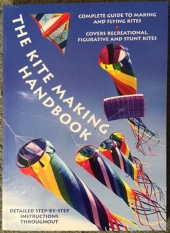
 11
11





Gardens in my mind never need water
Castles in the air never have a wet basement
Well made buildings are fractal -- equally intelligent design at every level of detail.
Bright sparks remind others that they too can dance
What I am looking for is looking for me too!

 10
10




Visit Redhawk's soil series: https://permies.com/wiki/redhawk-soil
How permies.com works: https://permies.com/wiki/34193/permies-works-links-threads
 7
7




Jay Angler wrote:I adore the Japanese Koi Kites which are just tethered to a pole. I'm not convinced they'd scare either birds or bunnies, but I expect they'd make you smile.

Gardens in my mind never need water
Castles in the air never have a wet basement
Well made buildings are fractal -- equally intelligent design at every level of detail.
Bright sparks remind others that they too can dance
What I am looking for is looking for me too!

 5
5




Visit Redhawk's soil series: https://permies.com/wiki/redhawk-soil
How permies.com works: https://permies.com/wiki/34193/permies-works-links-threads
 6
6




 5
5




I think the videos I've seen using kites to generate electricity used mechanical energy from the kite. And *really* big kites tethered to great big trailers in very windy places! I already mentioned the height limits and I found it interesting that the one time the fellows in the video got it to work, they'd exceeded those limits accidentally!Steve Zoma wrote:You can make usable electricity from kites using atmospheric electricity and corona motors...
Visit Redhawk's soil series: https://permies.com/wiki/redhawk-soil
How permies.com works: https://permies.com/wiki/34193/permies-works-links-threads
 4
4




 4
4




Bob Stuart wrote:
Given that what we really want is power on demand, what I'd like to try, or inspire (I'm old) is to use a kite to haul tanks of water up a hill to an upper reservoir, and produce hydropower as usual. It is not hard to get a kite to self-launch from a pole, If the wind died during a haul, first some water would spill to make the load easier. If the tank cart wound up down at the lower reservoir without enough wind to get going at all, the spring-loaded reel would bring the kite down before it hit the trees. When the wind picks up, it all starts going again.
Gardens in my mind never need water
Castles in the air never have a wet basement
Well made buildings are fractal -- equally intelligent design at every level of detail.
Bright sparks remind others that they too can dance
What I am looking for is looking for me too!

 5
5




 6
6




OK, so what systems could one set up, where on windy days, you could get the same work on land that the ferry gets in the water?Pearl Sutton wrote: Direct use of kite/sail technology, though, THAT fascinates me.
This post Reaction Ferries totally fascinated me. That's the kind of thing I need to learn to be able to use in my own conditions, which are very different, but not really....
Visit Redhawk's soil series: https://permies.com/wiki/redhawk-soil
How permies.com works: https://permies.com/wiki/34193/permies-works-links-threads
 3
3




 4
4




Jay Angler wrote:
I saw somewhere, someone using wind as mechanical energy to heat water, (not electrical) using friction, but I think that was just "warming" it, not full blown heating it to safe temperatures for dishwashing etc. Not sure if it worked well enough to be worth experimenting with.
Gardens in my mind never need water
Castles in the air never have a wet basement
Well made buildings are fractal -- equally intelligent design at every level of detail.
Bright sparks remind others that they too can dance
What I am looking for is looking for me too!

 3
3





 3
3




Tradition is not the worship of ashes, but the preservation of fire.
 4
4




 4
4




Jeremy VanGelder wrote:I like Bob's idea. I wonder if you could put the spool on a ratchet system so that when the wind dies down your kite gets pulled in, but the load stays where it is?
 3
3




 2
2




Trying to Listen to the land.
 4
4




 3
3




Remember, moderation in all things, except, perhaps, dietary diversity!
-- James A. Duke
 4
4




Jay Angler wrote:There's a building in the near-by city to me that has a raptor kite on their roof top which seems to blow around, but I don't know if long-term it's keeping the seagulls from pooping all over the roof. Almost nothing works for long term bird chasing unless you can regularly move it around. In fact, I just moved my two Scare-Eagles last night to new spots in my field. Ask me in 2 weeks if it helps??? At least the Raptors aren't taking a bird a day... I do have dangly things hanging off the Scare-Eagles in an effort to make them more effective.
There are places where kite-based electrical production has been proposed, but you'd have to research the odd's of it working on a small scale. I'm assuming you're not in any flight paths?
Personally, I adore the Japanese Koi Kites which are just tethered to a pole. I'm not convinced they'd scare either birds or bunnies, but I expect they'd make you smile.






 5
5




Tradition is not the worship of ashes, but the preservation of fire.
 6
6




Gardens in my mind never need water
Castles in the air never have a wet basement
Well made buildings are fractal -- equally intelligent design at every level of detail.
Bright sparks remind others that they too can dance
What I am looking for is looking for me too!

 7
7




Argue for your limitations and they are yours forever.

|
Heroic work plunger man. Please allow me to introduce you to this tiny ad:
Support permies and give beautiful gifts to gardeners: permaculture playing cards.
https://gardener-gift.com/
|








